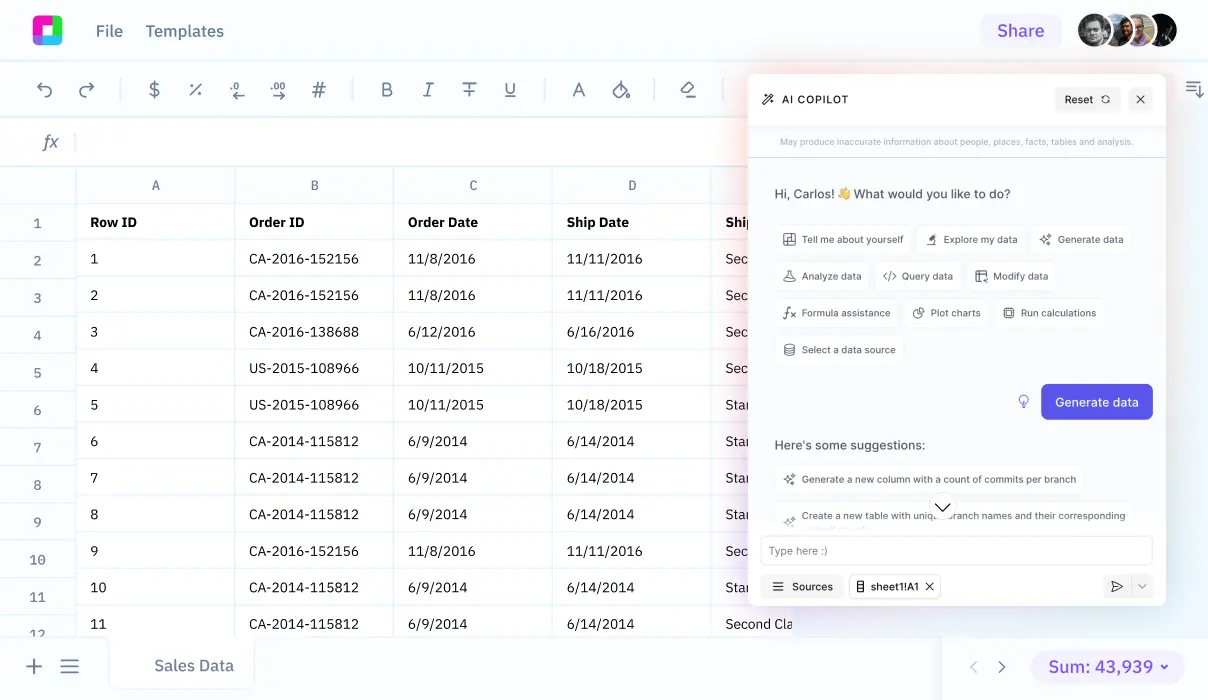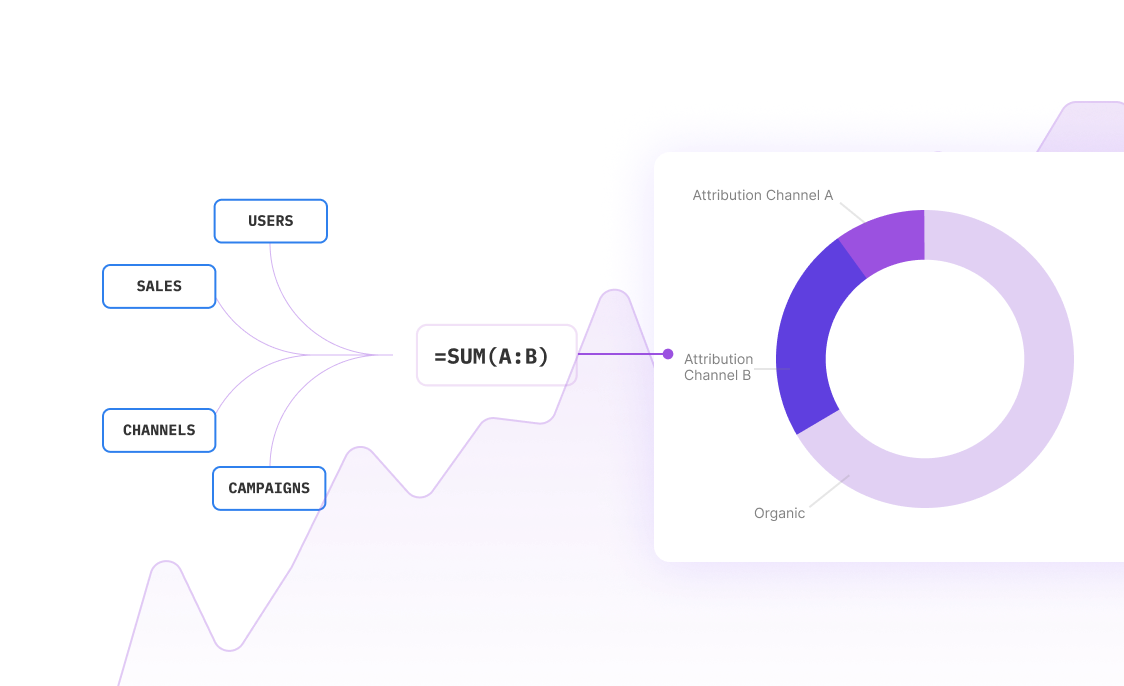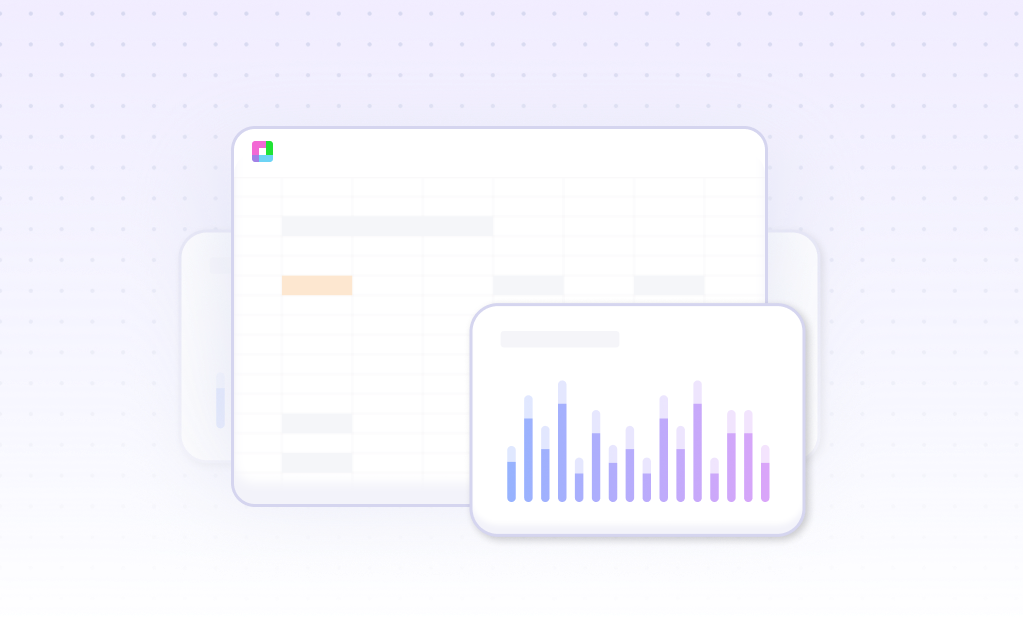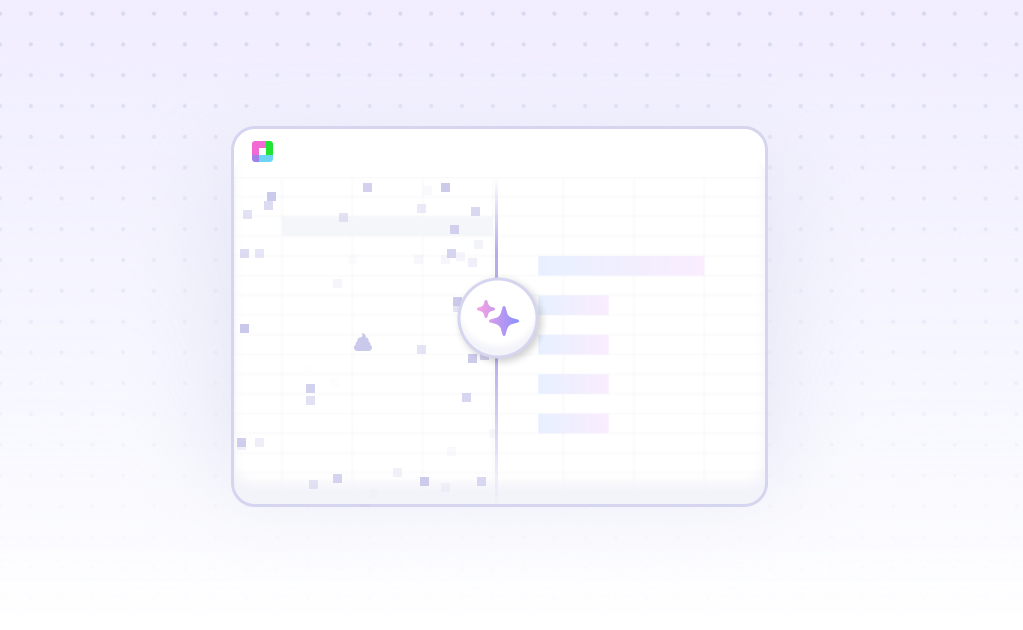
Your brand's performance data is scattered across platforms—social media analytics, email campaign reports, web traffic data, and sales metrics. You know the story: spreadsheets everywhere, manual data entry, and hours spent trying to piece together what's actually working.
What if you could consolidate all your brand performance data into one intelligent analysis framework? With AI-powered data analysis, you can transform fragmented metrics into comprehensive brand insights that drive real marketing decisions.
Why Brand Performance Analysis Matters
Turn scattered marketing data into strategic brand insights
Unified Brand Dashboard
Consolidate metrics from all marketing channels—social media, email, web, and advertising—into one comprehensive view of your brand's performance.
Campaign ROI Tracking
Measure the true impact of your marketing campaigns by connecting spend data with engagement metrics, conversions, and revenue attribution.
Brand Health Monitoring
Track key brand indicators like sentiment scores, share of voice, brand awareness metrics, and competitive positioning over time.
Audience Insights
Analyze customer behavior patterns, demographic trends, and engagement preferences to optimize your brand messaging and targeting.
Competitive Analysis
Compare your brand performance against industry benchmarks and competitor metrics to identify opportunities and threats.
Predictive Forecasting
Use historical brand performance data to predict future trends, seasonal patterns, and marketing opportunity windows.
Real Brand Performance Analysis Examples
Multi-Channel Campaign Performance
A growing e-commerce company needed to understand which marketing channels were driving the highest-quality customers. Their data was scattered across Google Analytics, Facebook Ads Manager, email marketing platforms, and their CRM system.
Using advanced data analysis techniques, they consolidated all touchpoint data and discovered that while social media ads generated the most clicks, email campaigns produced customers with 40% higher lifetime value. This insight allowed them to reallocate budget and improve their customer acquisition strategy.
Brand Sentiment Analysis
A consumer goods brand wanted to track how product launches affected overall brand perception. They collected data from social media mentions, customer reviews, survey responses, and support ticket sentiment.
The analysis revealed that negative sentiment spikes occurred 2-3 weeks after product launches, not immediately. This pattern helped them identify a customer onboarding gap and implement proactive support strategies that improved post-launch sentiment by 35%.
Seasonal Brand Performance Tracking
A fashion retailer needed to optimize their marketing calendar based on brand performance patterns. They analyzed two years of sales data, website traffic, social engagement, and advertising effectiveness across different seasons.
The statistical analysis revealed that their summer campaigns performed best when launched in early April, not May as they had assumed. Shifting their campaign timing increased summer sales by 22% and improved overall brand engagement during peak seasons.
How Brand Performance Analysis Works
Follow these steps to transform your marketing data into brand insights
Data Collection & Import
Gather brand performance data from all your marketing channels—social media platforms, advertising accounts, email marketing tools, web analytics, and sales systems. Import CSV exports or connect directly to your data sources.
Metric Standardization
Normalize different data formats and create consistent metrics across platforms. Align date ranges, standardize naming conventions, and establish key performance indicators (KPIs) that matter to your brand.
Performance Analysis
Apply analytical frameworks to identify trends, patterns, and relationships in your brand data. Calculate metrics like brand lift, campaign attribution, customer acquisition cost, and lifetime value across different channels.
Insight Generation
Use AI-powered analysis to uncover actionable insights about your brand performance. Identify top-performing campaigns, optimal messaging strategies, and audience segments that drive the best results.
Reporting & Visualization
Create comprehensive brand performance dashboards and reports that stakeholders can easily understand. Generate automated insights and recommendations for future marketing strategies.
Brand Performance Analysis Use Cases
Discover how different teams leverage brand performance analysis
Marketing Campaign Optimization
Analyze which campaigns drive the best brand awareness, engagement, and conversion rates. Optimize budget allocation across channels and improve campaign messaging based on performance data.
Brand Health Monitoring
Track brand sentiment, share of voice, and competitive positioning over time. Monitor how brand perception changes in response to marketing activities, product launches, or external events.
Customer Journey Analysis
Map how customers interact with your brand across different touchpoints. Identify which channels contribute most to conversion and where customers drop off in the journey.
Competitive Intelligence
Compare your brand performance against competitors using publicly available data. Identify market opportunities, benchmark your performance, and spot emerging trends in your industry.
ROI Measurement
Calculate the return on investment for different marketing activities and brand initiatives. Connect marketing spend to business outcomes and prove the value of brand investments.
Audience Segmentation
Analyze customer behavior and demographics to identify high-value audience segments. Tailor brand messaging and marketing strategies to different customer groups for better performance.
Essential Brand Performance Metrics
Effective brand performance analysis focuses on metrics that directly impact your business goals. Here are the key performance indicators that matter most:
Awareness & Reach Metrics
Engagement & Sentiment Metrics
Conversion & Revenue Metrics
With AI-powered analysis tools, you can automatically calculate these metrics and identify the relationships between brand activities and business outcomes.
Brand Performance Analysis FAQ
What data sources do I need for brand performance analysis?
You'll need data from your marketing channels (social media, email, advertising), web analytics, customer feedback systems, sales data, and competitive intelligence tools. The key is consolidating data from all touchpoints where customers interact with your brand.
How often should I analyze brand performance?
Monitor key metrics weekly for campaign optimization, conduct monthly comprehensive reviews for strategic insights, and perform quarterly deep-dive analyses for long-term brand health assessment. Real-time monitoring is essential for crisis management and trending topics.
What's the difference between brand performance and campaign performance?
Campaign performance focuses on specific marketing initiatives with defined start and end dates, while brand performance encompasses overall brand health, perception, and market position over time. Brand analysis looks at cumulative effects across all marketing activities.
How do I measure brand sentiment effectively?
Combine multiple data sources: social media mentions, customer reviews, survey responses, and support interactions. Use sentiment analysis tools to categorize feedback as positive, negative, or neutral, then track changes over time and correlate with brand activities.
Can I analyze brand performance for B2B companies?
Absolutely. B2B brand analysis focuses on industry thought leadership, professional network engagement, lead quality metrics, sales cycle influence, and account-based marketing effectiveness. The principles are the same, but the metrics and channels differ from B2C brands.
How do I connect brand metrics to business outcomes?
Establish clear attribution models that link brand activities to business results. Track customer journey data, use marketing mix modeling, and analyze correlation between brand health metrics and revenue, customer acquisition, and retention rates.
What tools do I need for brand performance analysis?
You can perform comprehensive brand analysis using spreadsheet tools like Sourcetable, which offers AI-powered analysis capabilities. Additional tools might include social listening platforms, web analytics, and survey tools, but the key is having a central system to consolidate and analyze all data.
How do I benchmark my brand performance against competitors?
Use publicly available data from social media, web traffic estimates, search rankings, and market research reports. Focus on relative performance metrics like share of voice, engagement rates, and brand mention volume rather than absolute numbers.
Frequently Asked Questions
If you question is not covered here, you can contact our team.
Contact Us





